14 Antique Lighting Pieces That Can Brighten Your Collection’s Value
Antique lighting can be a remarkable addition to any collection, offering both style and value. These pieces are often crafted with attention to detail, making them stand out in any room. The age and quality of antique lighting can dramatically increase the value of your collection. From classic chandeliers to unique wall sconces, each piece has its own charm. Investing in well-preserved lighting pieces can be a smart decision for both aesthetic and financial reasons.
This post may contain affiliate links, which helps keep this content free. Please read our disclosure for more info.
Victorian Gaslight Chandeliers
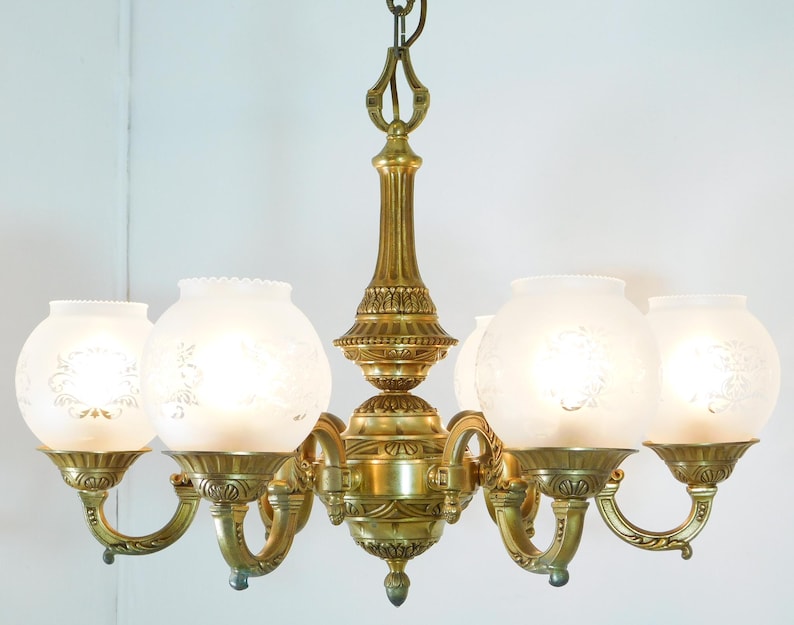
Victorian gaslight chandeliers are known for their intricate designs and luxurious materials, including brass, bronze, and crystal. These chandeliers were widely used in the mid-1800s, during the Victorian era, when gas lamps replaced oil lamps as the primary light source. Today, these chandeliers can range in value from $1,000 to $5,000 depending on their condition and the intricacy of the design. Collectors often value these pieces for their historical significance and craftsmanship.
These chandeliers are typically adorned with delicate glass prisms or cut crystal, giving them a timeless elegance. The gas-powered burners are now obsolete, but many pieces still feature the original gas fixtures, making them an appealing collector’s item. The detailed metalwork on the arms and frame can vary from floral motifs to geometric patterns. These lighting pieces are perfect for adding a vintage touch to any collection or interior.
Art Deco Wall Sconces
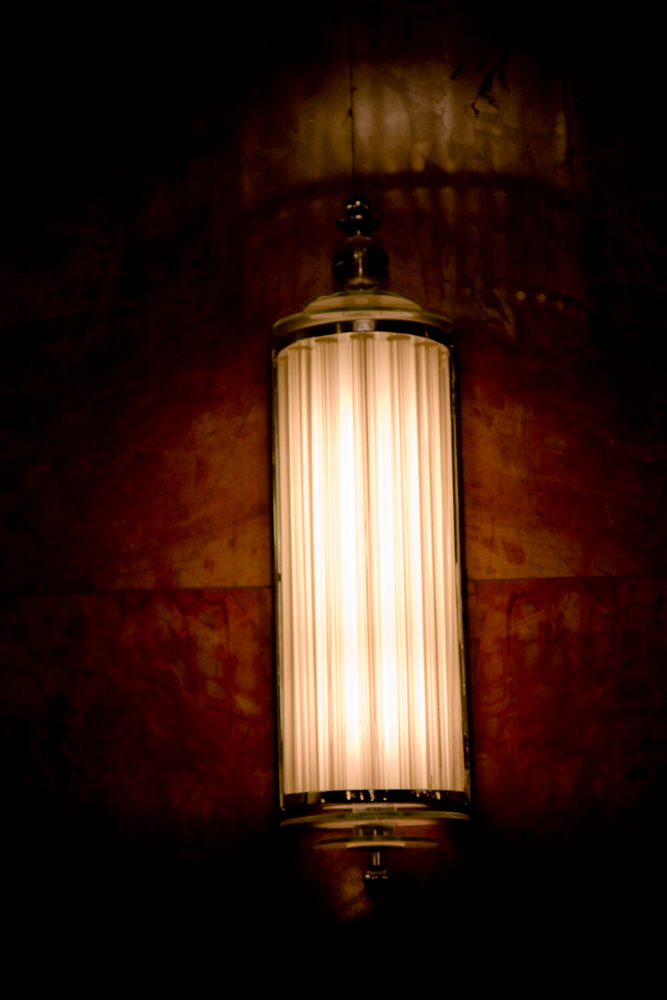
Art Deco wall sconces, which were popular in the 1920s and 1930s, are a striking example of the bold, geometric designs of the period. These sconces were often made from chrome, glass, or cast iron and feature sharp angles and streamlined shapes. The market value for a pair of original Art Deco sconces can range from $400 to $2,500 depending on the materials and condition. They remain highly sought after due to their connection to the glamour of the Jazz Age.
Many Art Deco sconces feature frosted glass with etched or frosted geometric patterns, often paired with chrome or brass frames. The iconic fluted lines and symmetrical shapes make these pieces stand out in any collection. Some sconces also include integrated light covers that add an elegant touch to the design. Their vintage appeal and connection to the glamorous era of the early 20th century make them a must-have for collectors.
Tiffany Lamps
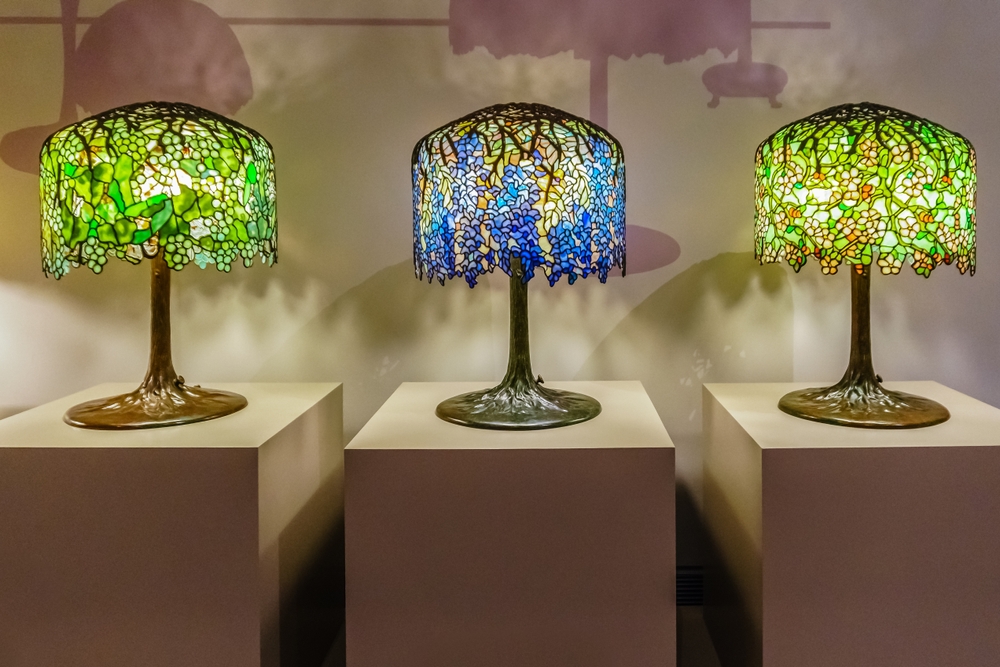
Tiffany lamps, known for their stained glass shades, were first created by Louis Comfort Tiffany in the late 19th century. These lamps typically feature intricate glasswork in floral or nature-inspired designs, often set in bronze or brass frames. Depending on the size and design, Tiffany lamps can range in value from $2,000 to over $50,000 for rare or highly detailed models. Their uniqueness, craftsmanship, and historical value make them prized possessions in antique lighting collections.
The process of creating a Tiffany lamp involves cutting and soldering pieces of glass, creating a stunning mosaic-like effect. The most valuable lamps often feature vibrant, colorful glass with intricate designs such as dragonflies or wisteria. Collectors seek out these lamps for their rich history and artistic value. Owning a Tiffany lamp is considered a significant achievement for lighting enthusiasts and collectors alike.
Mid-Century Modern Pendant Lights
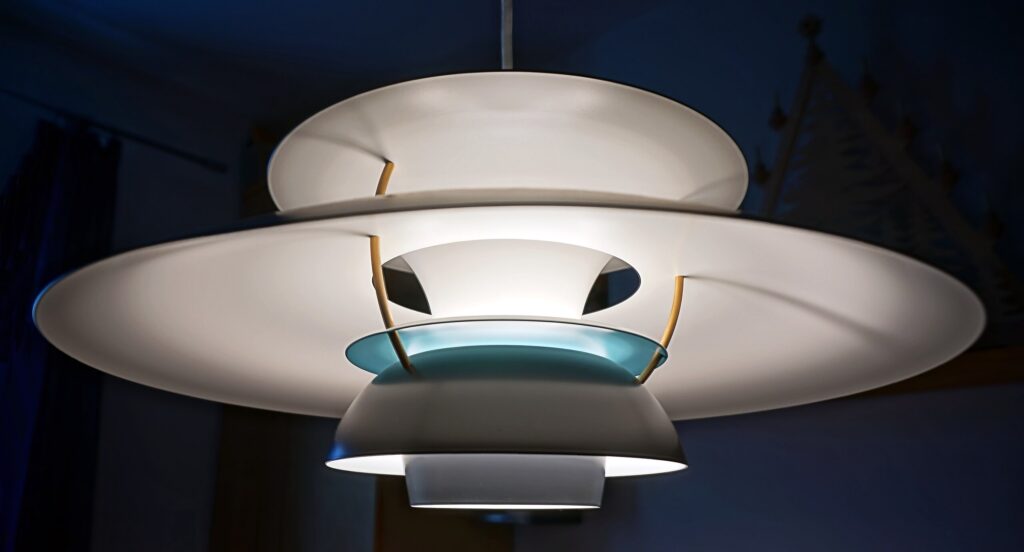
Mid-century modern pendant lights, which gained popularity in the 1950s and 1960s, offer clean lines and minimalist design that continues to captivate collectors today. These pieces were often made from metal, glass, or wood, featuring bold colors and sleek shapes. Depending on the brand and designer, mid-century modern pendant lights can range from $300 to $3,000 in value. Their timeless design and practicality make them an enduring favorite among antique collectors.
The pendant lights often feature simple, geometric shapes, such as cones, spheres, or discs, with materials like frosted glass or brushed aluminum. The use of materials like teak or walnut in the framing adds warmth and texture to these designs. Many of these lights were produced by well-known manufacturers like George Nelson and Louis Poulsen. Their enduring appeal lies in their ability to blend seamlessly with both modern and vintage interior styles.
Edwardian Lanterns

Edwardian lanterns, popular during the reign of King Edward VII (1901–1910), are known for their ornate designs and use of brass and wrought iron. These lanterns often featured intricate detailing and hand-forged metalwork, along with glass panels that allowed for a soft, diffused light. Depending on the style and condition, these lanterns can range in value from $500 to $2,000. Their detailed craftsmanship and historical significance make them highly collectible.
Edwardian lanterns were typically used in both outdoor and indoor settings, often suspended from ceilings or hanging in entryways. They feature a mix of Victorian and Art Nouveau influences, with decorative swirls and floral elements in the metal. The use of stained glass or frosted glass panels is common in these lanterns, adding to their charm. Their antique appeal and connection to the early 20th century make them a valuable addition to any lighting collection.
Regency Candle Holders
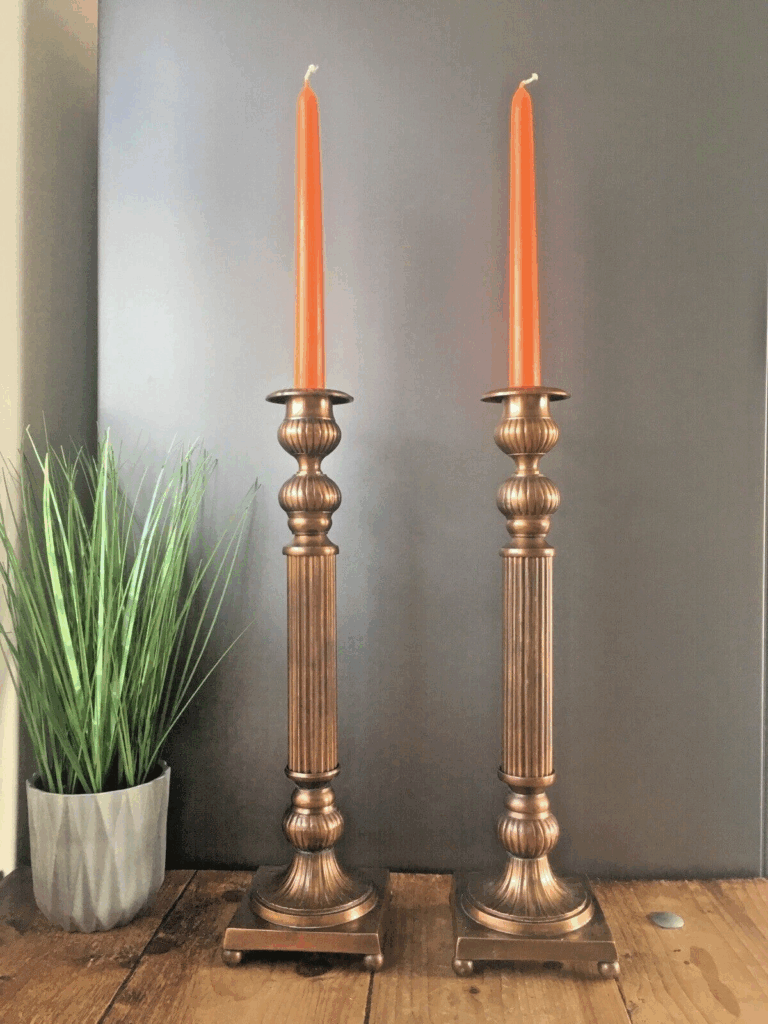
Regency candle holders, made from brass or bronze, were widely used during the Regency period in the early 19th century. These elegant lighting pieces were often designed with classical motifs such as fluted columns, urns, and floral elements. Regency candle holders are highly collectible and can range in price from $200 to $3,000 based on the intricacy and age of the piece. They are especially valued for their elegant design and historical connection to the period of Regency England.
These candle holders were primarily used for decorative purposes in drawing rooms or dining areas, where they added a touch of sophistication. They were designed to hold multiple candles, often arranged in symmetrical patterns. The brass and bronze finishes give them a warm, vintage feel that complements various interior styles. Their graceful design and historical significance make them a must-have for collectors of antique lighting.
Art Nouveau Table Lamps
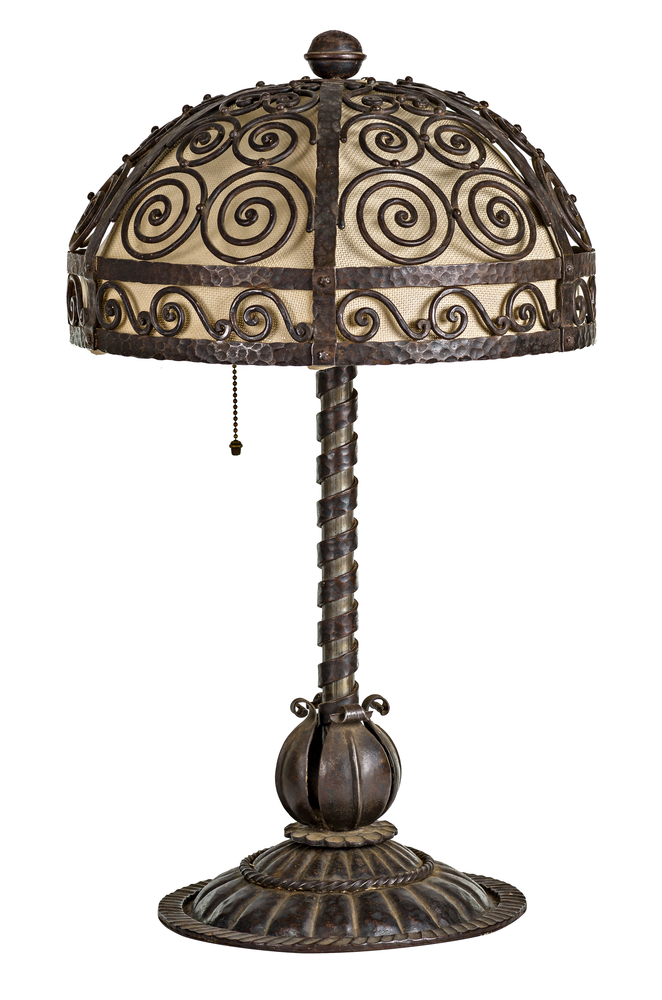
Art Nouveau table lamps, created between the late 19th and early 20th centuries, are known for their flowing lines, organic shapes, and nature-inspired designs. These lamps often feature floral patterns, curved metal stems, and stained glass shades, making them highly decorative. Depending on the artist or manufacturer, Art Nouveau table lamps can range in value from $1,000 to $6,000. Their beauty and intricate design make them highly sought after in the antique lighting market.
The use of materials like bronze, copper, and glass in Art Nouveau lamps creates a sense of movement and elegance. The glass shades often feature vibrant colors and intricate floral or botanical patterns, making each lamp a unique piece. The curved lines and asymmetry of these lamps were a departure from traditional styles, which is part of what makes them so appealing. Collectors admire these lamps for their artistic value and historical importance in the world of decorative lighting.
French Empire Chandeliers
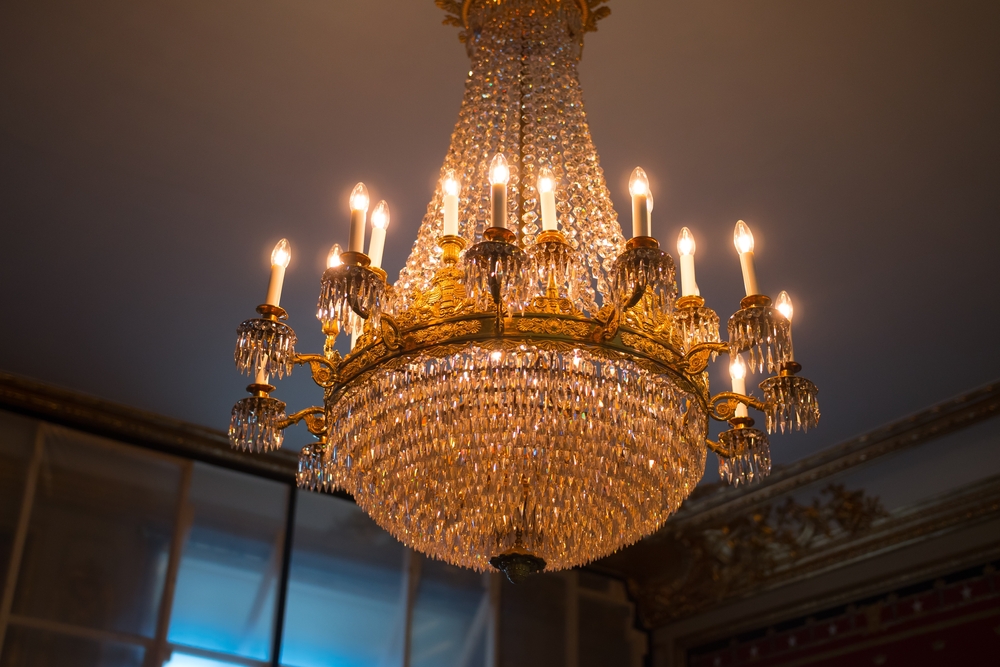
French Empire chandeliers, popular in the early 19th century, are known for their grandeur and classical design. These chandeliers were typically made of crystal, bronze, or ormolu, featuring elaborate designs with motifs such as acanthus leaves and laurel wreaths. Depending on the size, age, and condition, these chandeliers can range in value from $3,000 to $12,000. Their elegant design and connection to French neoclassical style make them highly desirable among collectors.
These chandeliers were designed to be focal points in grand rooms such as dining halls and ballrooms, often incorporating multiple tiers of crystals. The intricate metalwork and crystal prisms reflect light beautifully, creating an eye-catching display. Many French Empire chandeliers have been carefully restored to maintain their original beauty. Their association with the Napoleonic era adds a rich historical dimension, making them a valuable piece for collectors.
Victorian Oil Lamps
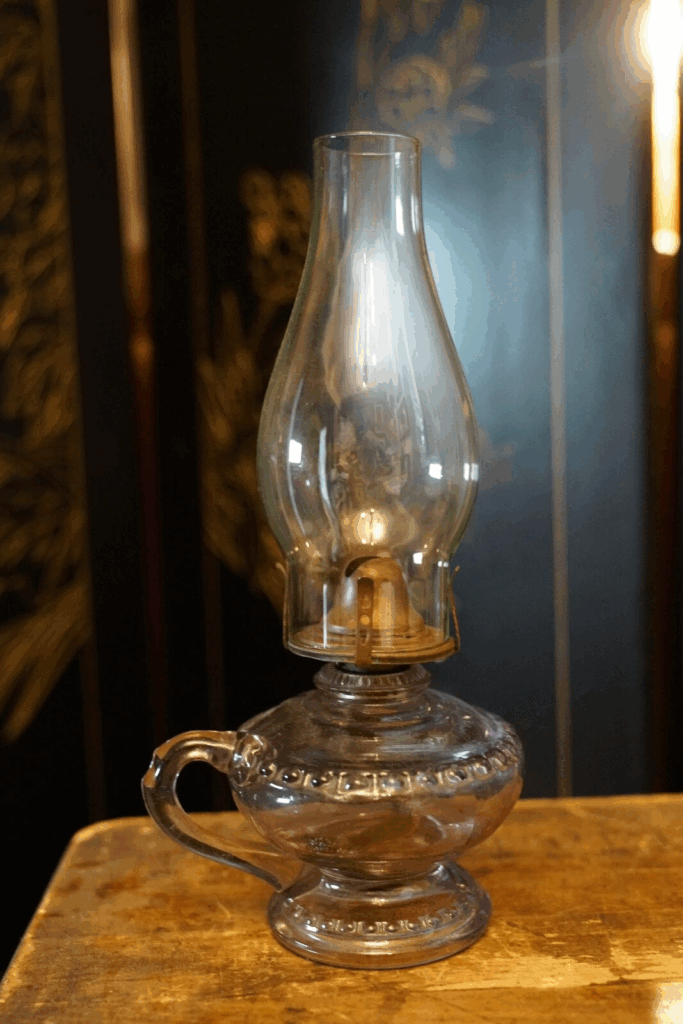
Victorian oil lamps, which were widely used in the mid-1800s, are highly collectible due to their historical significance and charming design. These lamps were made from materials like brass, glass, and ceramic, with many featuring ornate bases and hand-painted glass shades. Victorian oil lamps can range in price from $200 to $1,500, depending on the rarity and condition of the piece. Collectors are drawn to these lamps for their craftsmanship and the role they played in lighting homes before the widespread use of electricity.
The oil lamps often feature intricate metalwork on the base and ornate glass shades with floral or geometric patterns. The glass shades were sometimes hand-blown and painted, adding an artistic touch to the lamp. Many Victorian oil lamps were designed to be both functional and decorative, often placed on mantels or tables. Today, these lamps are sought after for their nostalgic value and the charm they bring to a collection.
Victorian Hanging Oil Lamps
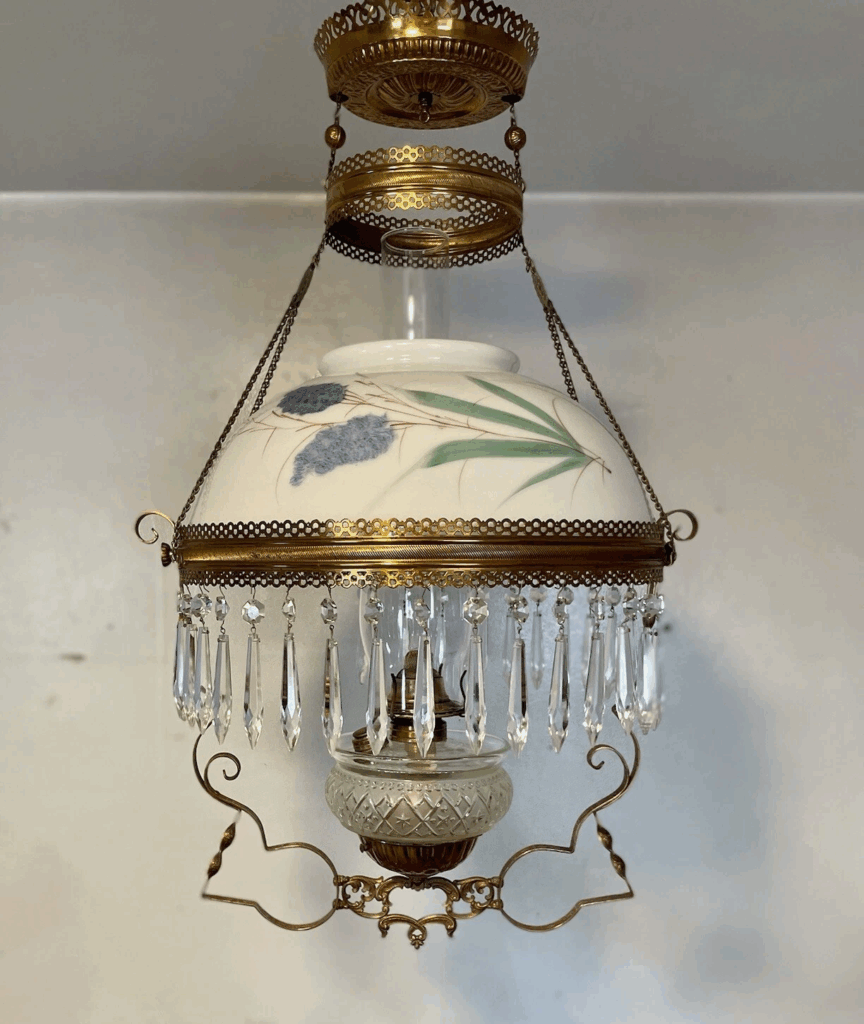
Victorian hanging oil lamps, which were popular in the late 1800s, are characterized by their ornate designs and use of oil as the primary light source. These lamps often feature brass or bronze bases with frosted glass shades that diffuse the light, creating a warm, soft glow. Depending on the craftsmanship and materials, these lamps can range from $500 to $2,000 in value. Their historical significance and intricate design make them a sought-after item for collectors of antique lighting.
These hanging lamps often feature a central oil reservoir that can be filled to keep the light burning for long periods. The glass shades were often hand-painted with floral or geometric patterns, adding an artistic touch. Many Victorian hanging oil lamps feature intricate metalwork, with designs ranging from floral to neoclassical motifs. They were once the centerpiece of dining rooms and parlors, adding both light and elegance to a space.
Louis XVI Bronze Sconces
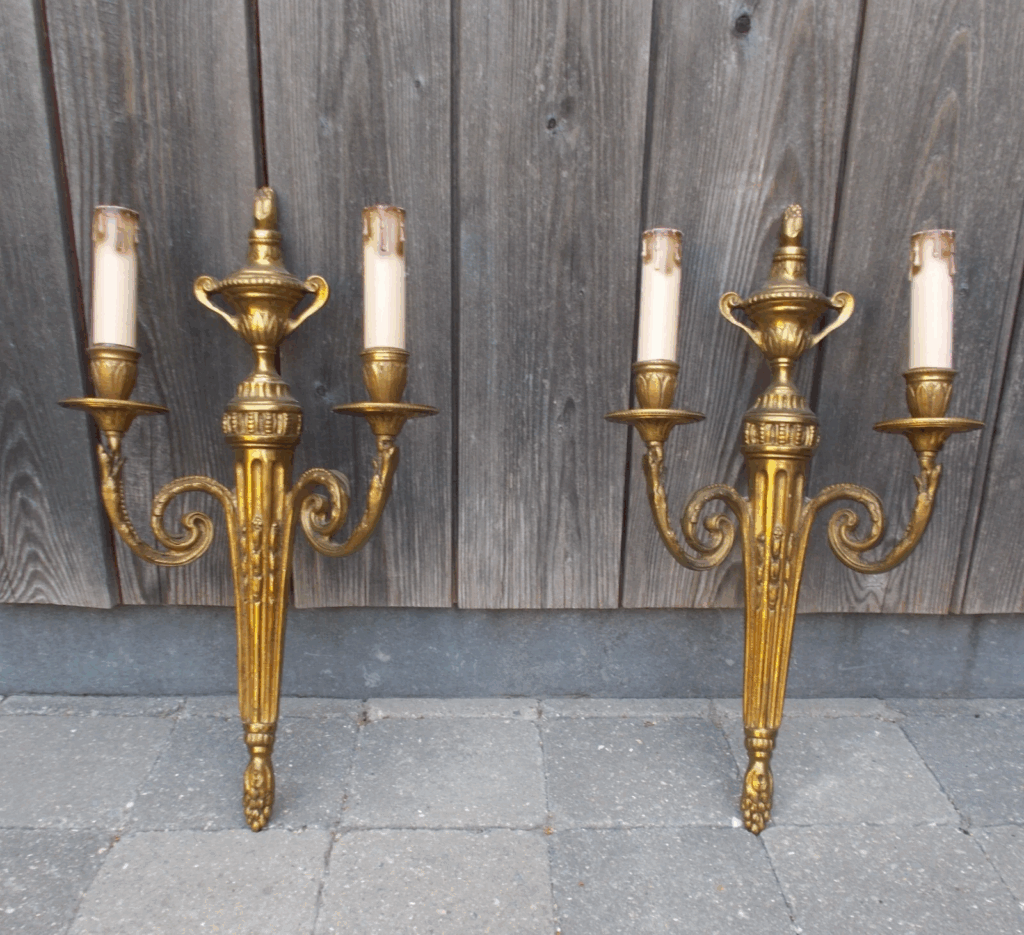
Louis XVI bronze sconces, which were designed during the reign of King Louis XVI in France, are known for their classical style and use of fine materials like bronze, ormolu, and gilded accents. These sconces typically feature neoclassical motifs such as urns, laurel wreaths, and fluted columns. The value of these sconces ranges from $1,000 to $5,000, depending on their condition and rarity. They are highly valued for their craftsmanship and historical connection to the French monarchy.
The intricate bronze work and gilded finishes make these sconces a statement piece in any room. Some sconces include glass or crystal elements, which enhance their ability to reflect light and create a beautiful ambiance. Louis XVI sconces were often used in grand settings such as salons and dining rooms. Their timeless elegance and historical importance make them a prized addition to any collection.
Georgian Candle Holders
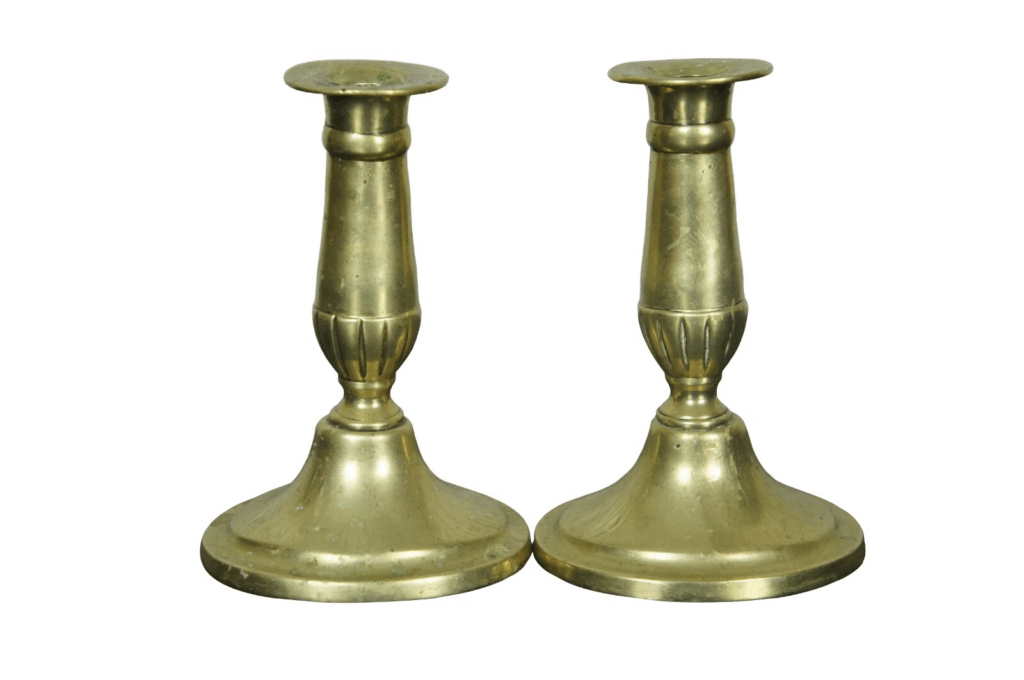
Georgian candle holders, popular during the 18th century, are known for their simple yet elegant design. These holders were typically made from brass or silver, featuring clean lines and classic motifs such as scrolls and fluted columns. Depending on the material and design, Georgian candle holders can range in value from $300 to $2,000. Their minimalistic yet sophisticated style makes them highly collectible.
These candle holders were often designed to hold multiple candles, creating a bright and welcoming atmosphere in drawing rooms and dining areas. The use of brass or silver adds a touch of luxury, while the simple design ensures that they complement various interior styles. Georgian candle holders are often marked with hallmarks, indicating their authenticity and age. Their understated elegance makes them a valuable addition to any antique lighting collection.
Dutch Colonial Lanterns
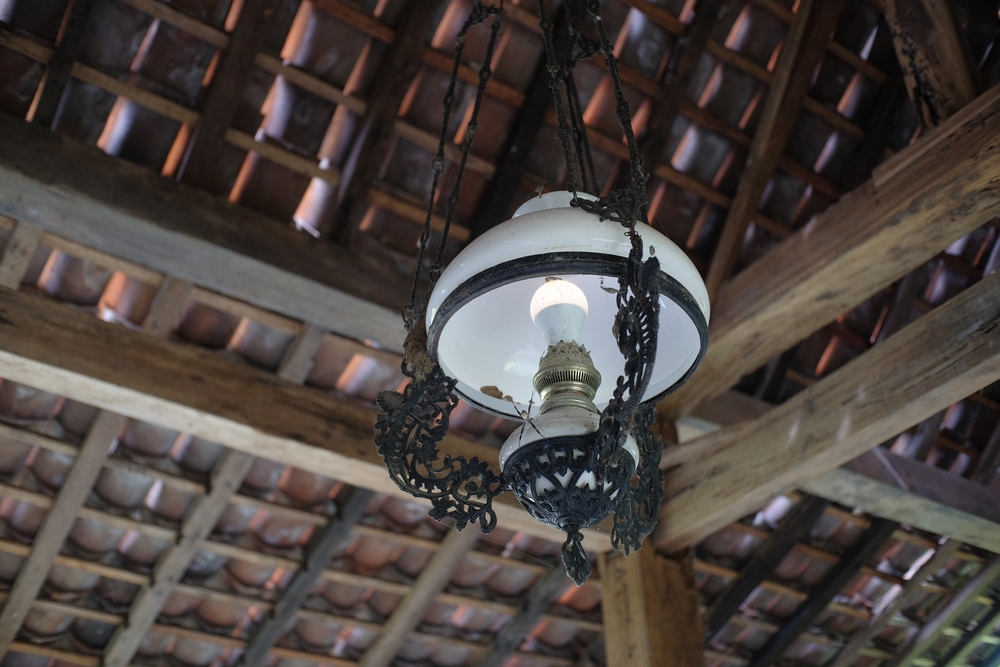
Dutch Colonial lanterns, which date back to the 17th and 18th centuries, are known for their sturdy construction and practical design. Made from brass or iron, these lanterns were originally used in the Netherlands and colonial territories to provide reliable lighting. Today, these lanterns are valued between $300 and $2,000, depending on their condition and rarity. Collectors appreciate them for their historical significance and durable design.
These lanterns often feature simple, functional designs with small glass panels and a sturdy frame to protect the flame from wind and rain. They were commonly used on ships, in homes, and in public spaces to provide consistent light during the night. Many Dutch Colonial lanterns are highly collectible due to their association with early exploration and trade routes. Their rugged beauty and historical value make them a prized find for collectors.
Mission Style Lanterns
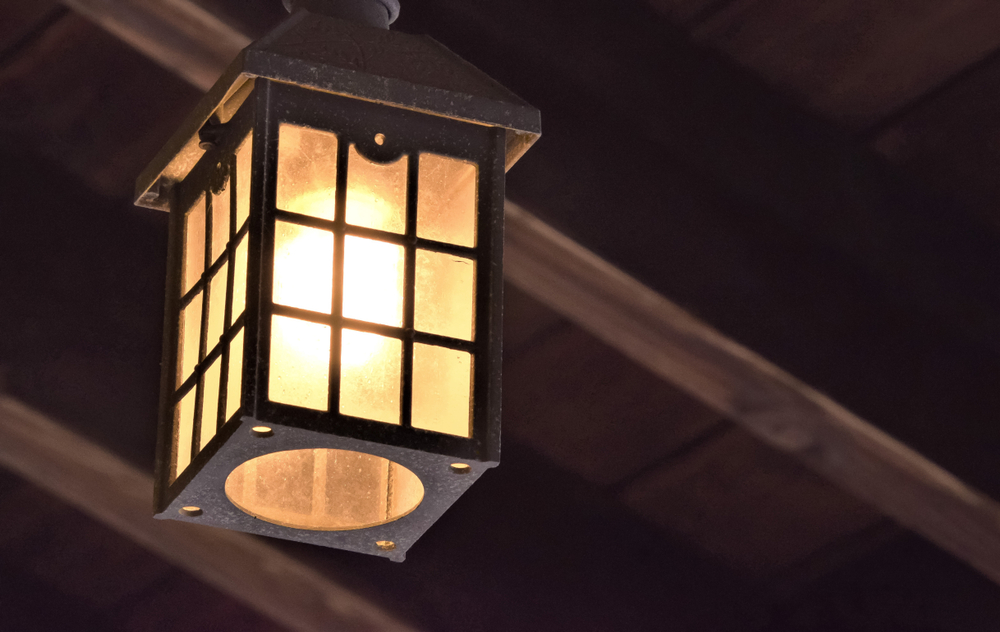
Mission-style lanterns, which became popular in the early 20th century, are known for their simple, sturdy design and use of wood and metal. These lanterns were part of the Arts and Crafts movement and were often made with copper, brass, or iron, featuring stained glass or mica shades. The market value for a mission-style lantern can range from $300 to $2,000 depending on the materials and condition. These lanterns are highly sought after for their connection to the Arts and Crafts movement and their rugged, hand-crafted look.
Mission-style lanterns often feature a boxy, geometric design with stained glass panels in muted colors, providing a soft, warm light. The sturdy metal frame and the focus on craftsmanship make these lanterns durable and timeless. Their rustic yet refined appearance allows them to blend seamlessly with both traditional and modern interior designs. Mission-style lanterns are perfect for collectors looking for lighting pieces that embody both functionality and artistic craftsmanship.
This article originally appeared on Avocadu.
